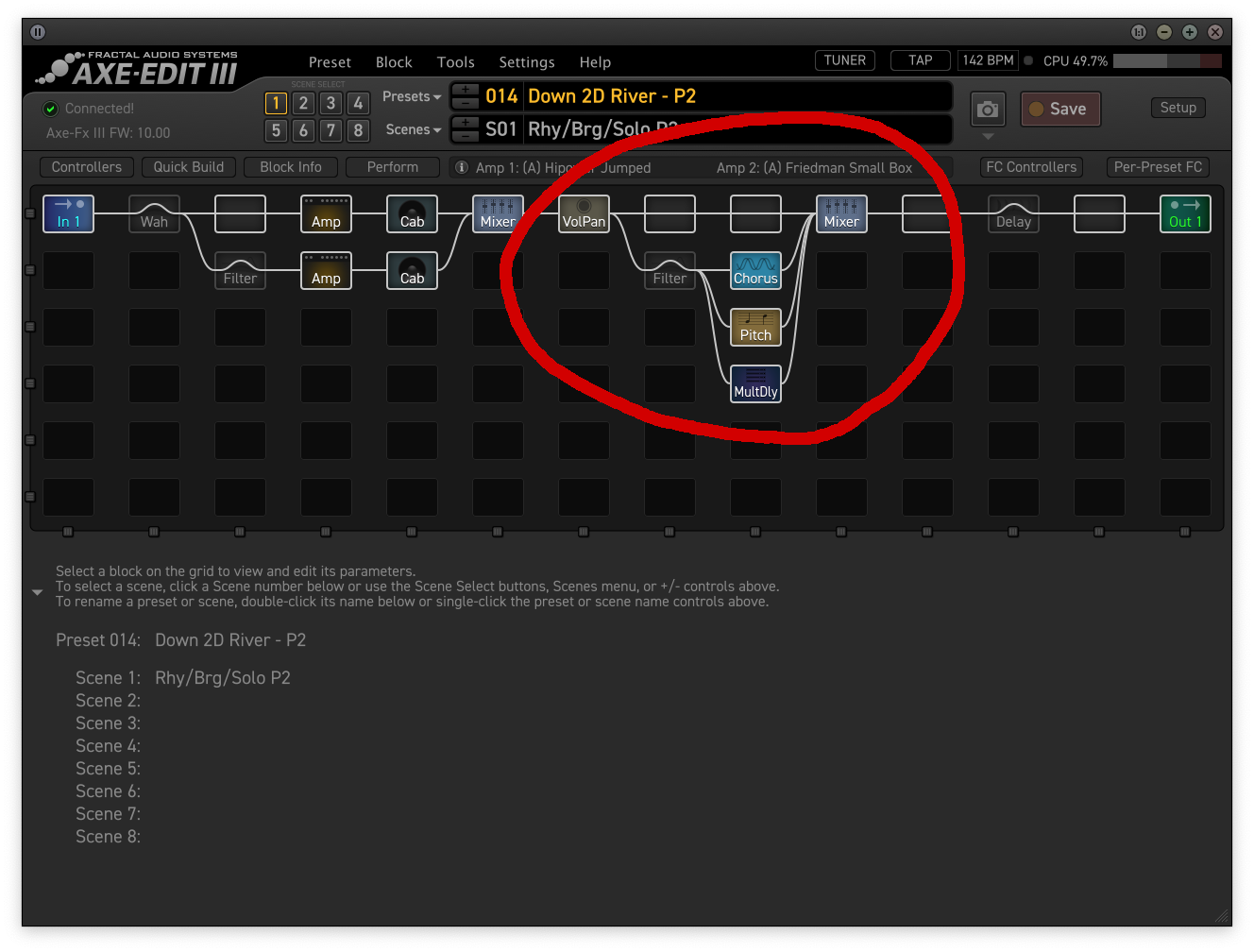Joero6
Inspired
Since I bought my Axe fx 2 I have always used it in a traditional manner. One line of the grid from input to output with 1 amp block and effects blocks. I was recently trying something new and split the signal so i had a "Y" from the input to 2 outputs. Not only was it louder, it felt a little more articulate? Not sure, but what did I actually do to the signal? I want to start doing more complex routings now but have no idea where to start. Any advice would be greatly appreciated. Would like to try using 2 different amps at once, as well as maybe sending a wet signal and a dry signal to 2 separate outputs. Do i need to do something special to make the signal go to the different cabs?
My Axe is set up as follows at the moment. Guitar> whammy> wah> patchmate pedal switcher> Front input of axe> Output1L> tuner> Patchmate again> single cable with Y splitter to both inputs of Matrix Power Amp> channel a into 4x12 cab and channel b into 4x12 cab. Thanks Joe
My Axe is set up as follows at the moment. Guitar> whammy> wah> patchmate pedal switcher> Front input of axe> Output1L> tuner> Patchmate again> single cable with Y splitter to both inputs of Matrix Power Amp> channel a into 4x12 cab and channel b into 4x12 cab. Thanks Joe

